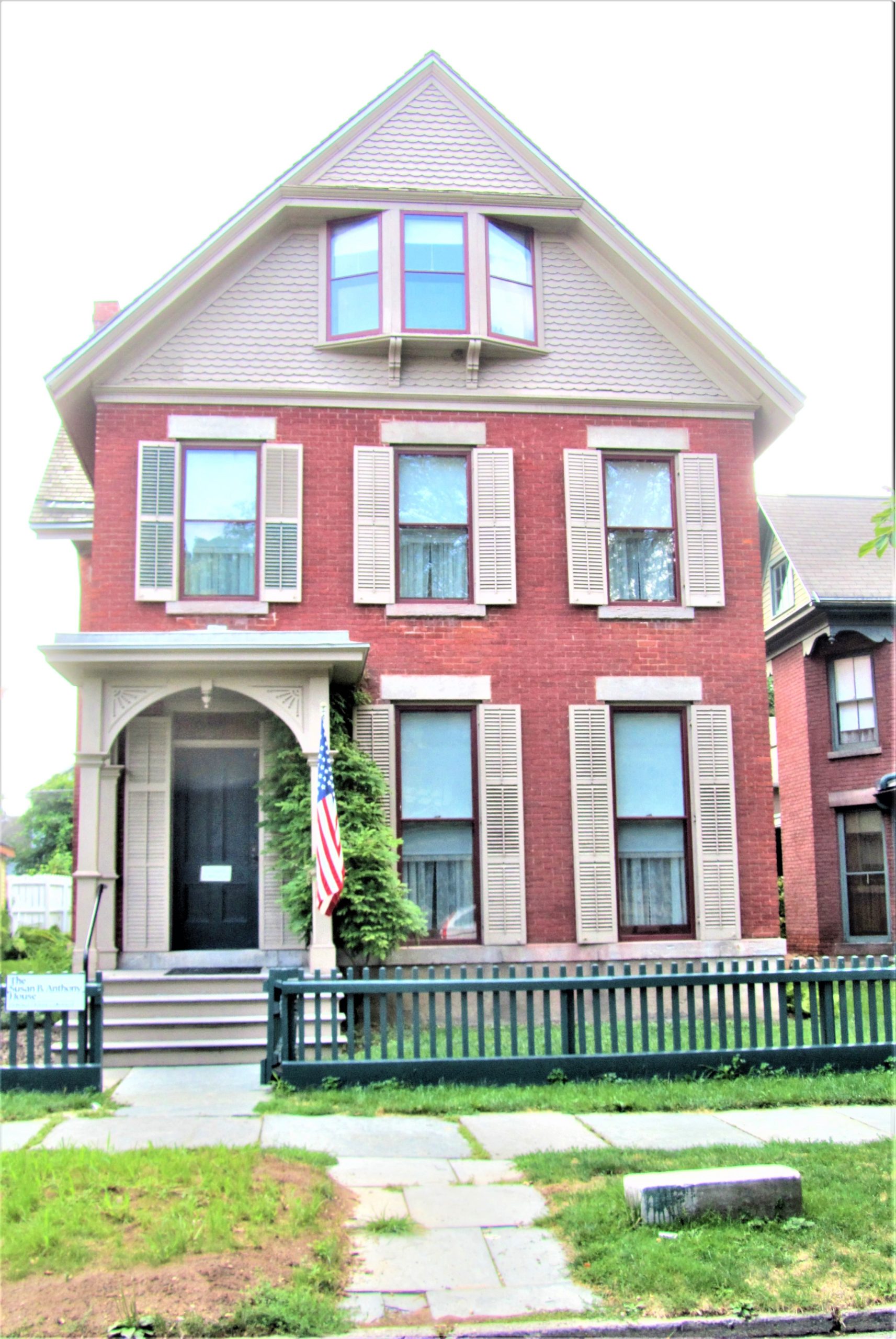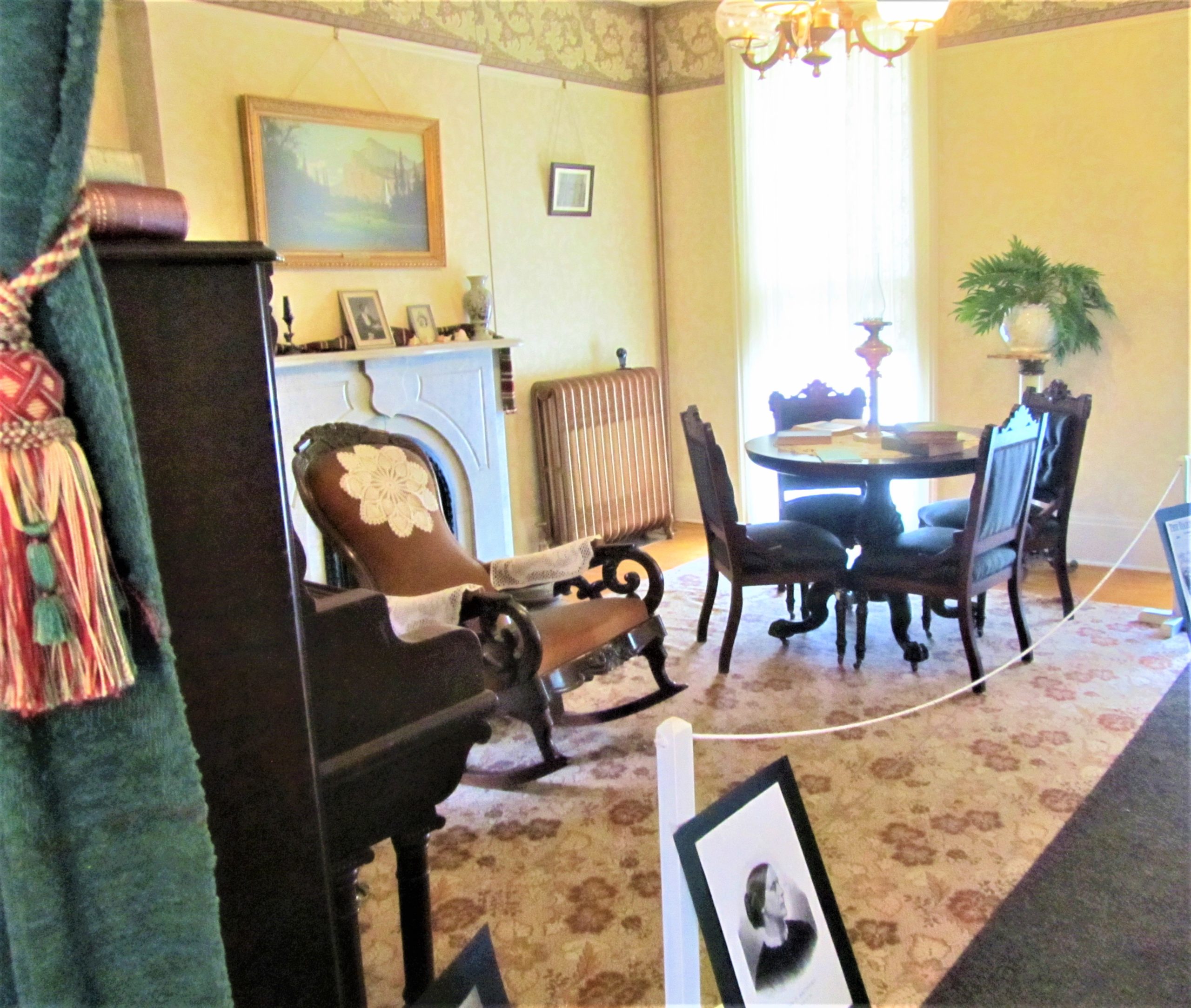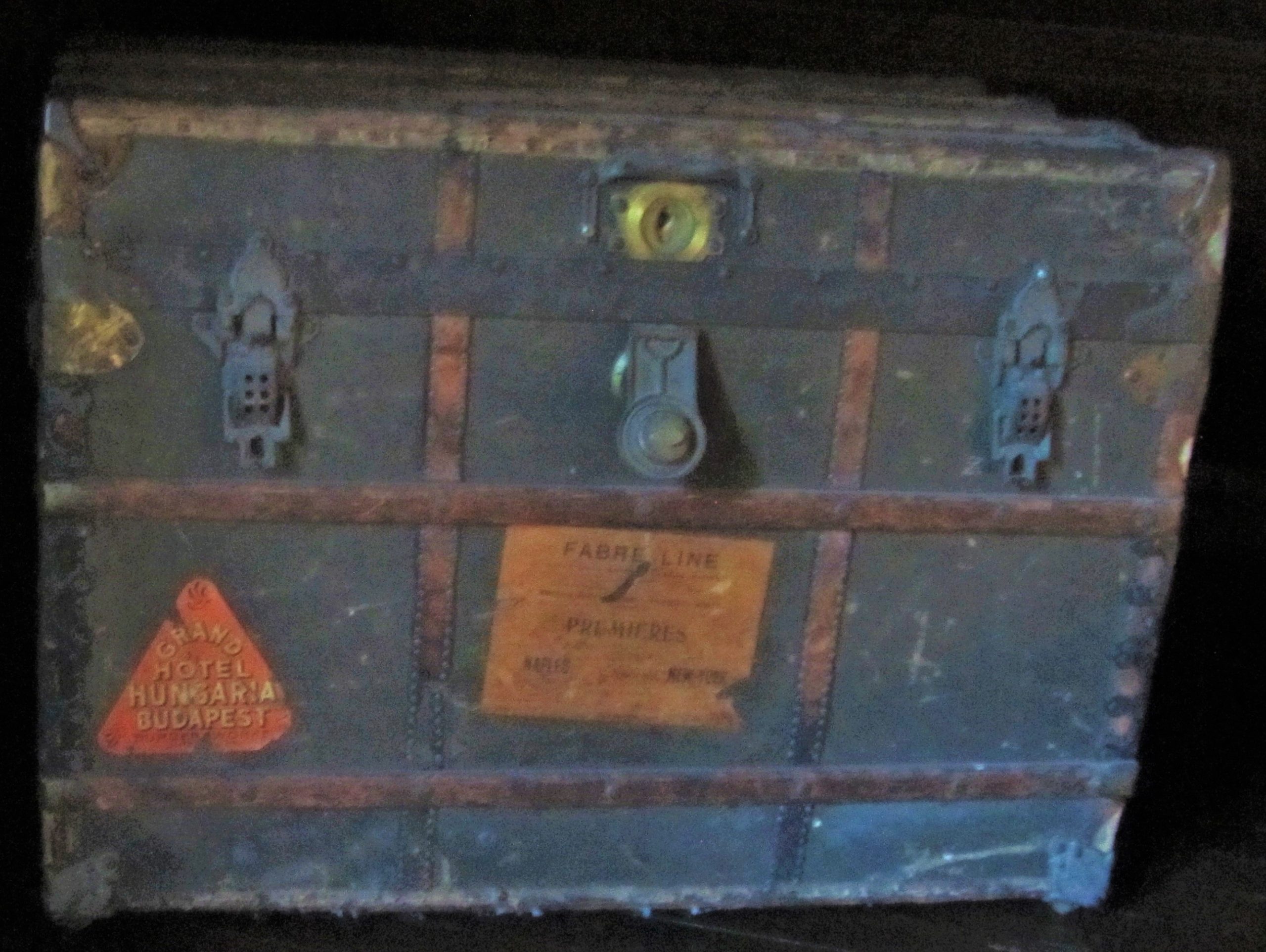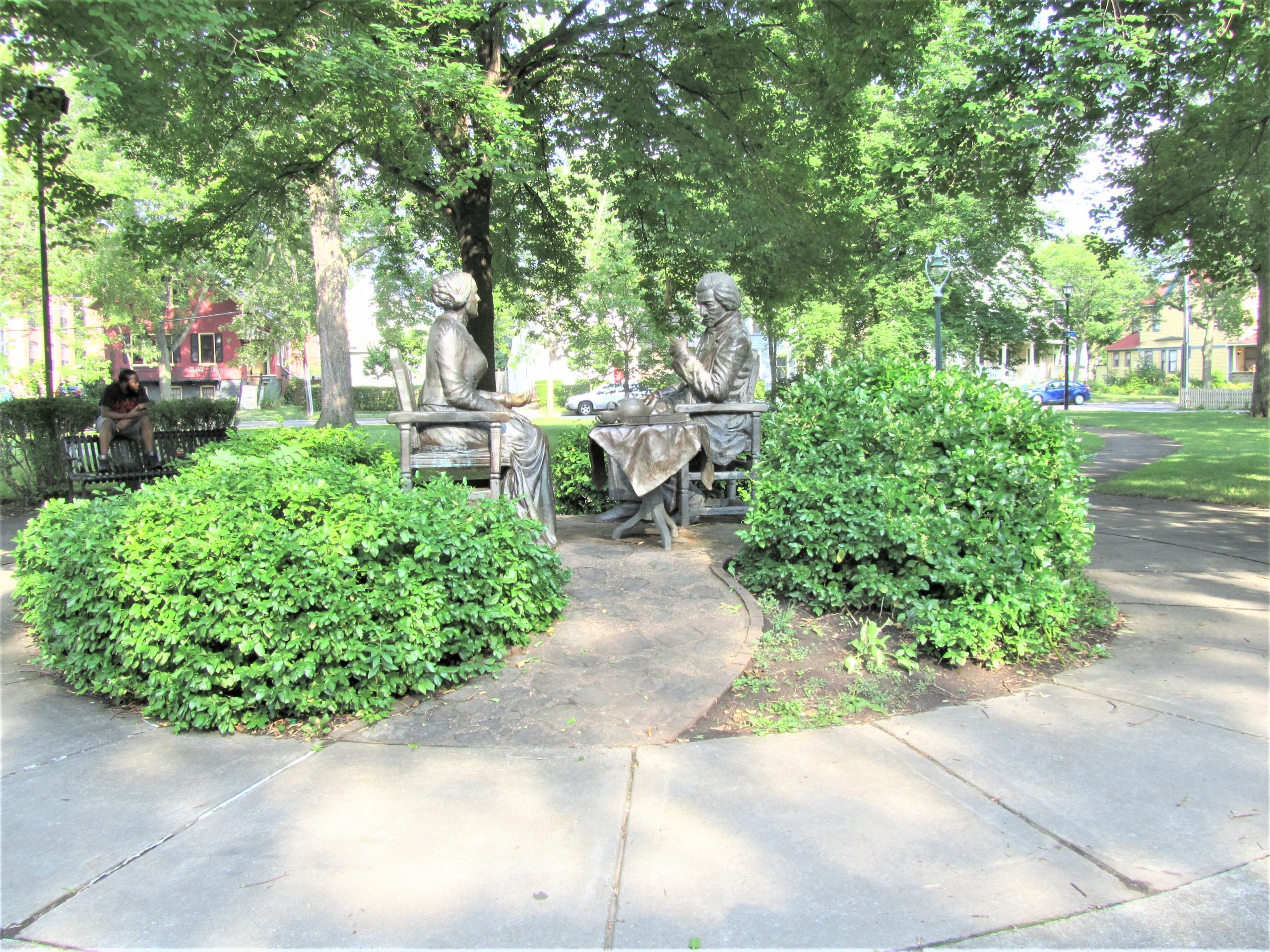
National Susan B. Anthony Museum & House
Failure is impossible
These words addressed to the assembled women at her last women’ s suffrage convention in 1906, became the motto of her fellow-combatants. Although Anthony sensed that she would not live to see women go to the polls in her lifetime, she was convinced that their right to vote could not be stopped. Shortly after the convention she died in her house in Rochester.
Who was this bold, courageous and keen-minded lady that compassionately dedicated her life to change society: fighting for women’s rights, for female suffrage, against slavery, campaigning for temperance and educational reform, and – last but not least, engaging as Labor Activist? We are already familiar with her as we met her at the Women’ s Rights Trail in Seneca Falls, the birthplace of the women’ s rights movement. Now, we are visiting her just about 30 miles away, in Rochester, near Lake Ontario, in her former house. She lived here during the last forty years of her life, politically active until her death at the age of 86. The red-brick Victorian house was built before the American Civil War. In 1945 it was purchased by a group of Rochester women to maintain and commemorate the memory of this remarkable revolutionary and her extraordinary fight for women’s rights. Today Anthony’s house is a museum named after her: National Susan B. Anthony Museum & House in 17 Madison Street, ROCHESTER, NY.
As you may not visit Anthony’s house on your own, it is best to join a tour that starts at the Visitor Center with its museum. No problem, if you have to wait a little bit. Take your chance and visit the museum. It is worthwhile to put yourself into the proper mood and prepare for the tour by immersing into Anthony’s life: her origin, her influence on the various reforms and movements she supported and participated in and about her friendship with Frederick Douglass, a former slave and fellow-combatant in female suffrage.
For me, it was astonishing to realize that persons who were politically active in the female suffrage movement as well devoted their efforts to temperance and anti-slavery. The supporters of these reform movements distinguished themselves by progressive thinking. They represented the progressive zeitgeist.
Susan Brownell Anthony was born as a daughter of a Quaker family. Thus, she grew up with people that believed in equality of all human beings, women and men all the same. This way of thinking became the foundation of Susan’s ideas. Although Quakers mainly were the ones who sent care packages under the Marshall Plan to devastated and hungry Europe after the Second World War, they are hardly known to us. In doing so, they followed one of their religious principles: Everybody has to do something good in her/his life. But let’s turn back to Susan B. Anthony. As her father did not share the common thoughts of that time that women are not able to learn higher mathematics, his daughters were educated well. Later, as a teacher, Anthony discovered that she was paid only a quarter of the salary of her male colleagues. It is sad to notice that her quote from 1903, after more than 100 years(!), in the 21st century, still is valid:
Women must earn equal pay for equal work and it should go without saying that they are suitable for positions like headmasters or presidents. Therefore one must insist upon the fact that qualification and not sex determines engagement and salary. Susan B. Anthony, 1903, (translated from German to English myself)
Equal pay for equal work! More than a century women are demanding justice in terms of their wages. At least once a year the issues of gender pay inequity are discussed in media, but after a while the topic fades away until next year’s Equal Pay Day. A never ending story up to now.
Her sister, Mary Anthony, with whom Susan lived together, as well was confronted with the fact that she was paid less as a female. She was a fighting nature as well. She was the first woman in Rochester who, as a principal, demanded to earn the same wage as men in this position – and she won the fight.
At the headquarters of the suffrage movement
When Anthony was not canvassing across the nation for women suffrage, she lived here – writing, planning, organizing, meeting fellow-combatants, networking. The house became the headquarters of the National Woman Suffrage Association (NWSA), which was founded by Anthony in 1896. Thus, famous people met here, like Elisabeth Cady Stanton, Amelia Bloomer or Frederick Douglass. In a guest room she hosted many of the key suffragists of that time in case they wanted to stay overnight.

As we move through the rooms, from the 1st floor up to the 3rd, our guide gives life to exhibited furniture, objects and photos by telling interesting stories about them. Although the interior is not original any more, it was restored and returned to its appearance the last time Anthony lived here. Thus, it conveys the flair of the 19th and the beginning of the 20th century. How bluntly Anthony stood up for women’s rights we get to know in one of the most historically significant rooms in the house. I imagine how she herself, with her direct and self-confident manner, would welcome us:
Please, don’t hesitate to come into my front parlor, where I was arrested in 1872. What was my offense? I participated in the presidential election. – Jailed for the crime of voting! I saw no harm in doing that because I believed that women had that right to go to the polls under the 14th amendment. After we had demanded our right for voting in 40 consecutive sessions of Congress and our demands repeatedly were rejected, I took up more drastic means.
Convinced, that women as citizens must not be excluded from voting – as suffrage was the basis of equality – she unallowably participated in the presidential election of 1872. How did she manage it? Some days before voting she registered for it. In doing so, her bold and convincing manner was very helpful. After she had entered a registration office, she threatened the official in charge to sue him in case he would reject to put her on the list. Thus, she was registered and on the 5th of November, 1872 she cast her vote. After she had taken matters into her own hands, she excitedly wrote to her friend Elisabeth C. Stanton: “Well, I have been & gone & done it!”
Shortly after that she was arrested in her house. The officer wanted that she would follow him, because he never had arrested a woman before. For him, it just was indecent to do it. But Anthony insisted in being arrested like a man and taken away in handcuffs. In the end her perseverance was successful. With this clever public relations move she made the headlines under the title: “The woman who dared.”

“The woman who dared.”
Even in court she did not knuckle under. She put through to make the speech for the defense herself. She gave arguments for the fact that the penalty was unjust. Not to be allowed to vote contradicts the 14th amendment because it contains equal treatment for every citizen. Therefore arresting her was illegal and discriminatory. But the court held the view that the amendment did not cover women suffrage. Thus, Anthony was fined 100$, she never paid.
Then we move on to Anthony’ s study, where our guide calls our attention to the photos on the walls:
Look at these photos. What is remarkable? Well, if you take a closer look you realize that they almost exclusively show women. In surrounding herself with them, she wanted to honor those women who supported her.” Further images in various rooms of the house tell an interesting story to those who know how to interpret them.
This type of photographs is known as African Hospitality. If you found images showing scenes of slavery, you knew as a visitor, that you were in a house of abolitionists”, our guide explains to us. For me, these photographs also make obvious that deprived women and deprived slaves supported each other in their fight for their rights. As friends Susan B. Anthony and Frederick Douglass, both members of the “American Equal Rights Association (AERA), fought together for equal rights for all citizens, irrespective of race, skin color or sex. After the Civil War, as the chance to obtain the right to vote was growing, Anthony however, had to notice full of anger: men’s skin excels sex.
Mr. Phillips argued that the time was ripe for striking the word ‘white’ out of the New York constitution, at it’s coming convention, but not striking out ‘male’. Mr. Tilton supported him, in direct contradiction to all he had so warmly advocated only a few weeks before, and said what the women should do was canvass the State with speeches and petitions for the enfranchisement of the negro, leaving that of the women to come afterward, presumably twenty years later, when there would be a revision of the constitution. Mrs. Stanton, entirely overcome by the eloquence of these two gifted men, acquiesced in all they said: but Miss Anthony, who never could be swerved from her standard by any sophistry or blandishments, was highly indignant and declared that ‘she would sooner cut off her right hand than ask the ballot for the black man and not the woman.’ Harper, Ida Husted, The Life & Work of SBA Volume 1 (Ayer Company Publishers, Inc, Reprint 1988) 261
Her friend Frederick Douglass as well feared that the vote for black men would not pass, if it was tied up with the one of black and white women. From now on he argued, that the time for female suffrage was not ripe. Nevertheless: Suffragists did not succumb and kept going. One of their means in the fight was a newspaper, published by Susan B. Anthony and her friend Elisabeth C. Stanton. They boldly named it“The Revolution”. Its motto was:
Men their rights and nothing more; women their rights and nothing less. Susan B. Anthony, Elisabeth C. Stanton, 1868
Isn’t it amazing how courageously and powerfully women fought for suffrage for decades? The more I learn about it the more I am wondering about the fact that even nowadays when I read articles about the topic I get the feeling that the right to vote was given to us as a present by generous men. It’s time to re-write history. One of the reasons I like women’s museums so much is, that they make change possible as they provide a different view on history. They let us see things we did not see before. Hitherto hidden facts are made visible. Our last stop on our tour refers to this fact. It is the third-floor attic workroom, where Anthony helped write the monumental History of Women Suffrage.

Anthony’s suitcase
As a person that likes traveling I am fond of looking at an original suitcase that Anthony used and I am happy that they developed into rucksacks and suitcases on rolls.
I always will keep Anthony’ s last words in my mind, when she died in her house in 1906:
Don` t cry, but keep on fighting.
After you have visited the museum, don’t miss to walk through the area around the museum, the Susan B. Anthony Preservation District. You will find wonderful examples of 19th century architecture. You may say a last “Good bye” to the great suffragist in a small park nearby the museum, named after her – Susan B. Anthony Square. It was founded in the 1830s and re-landscaped in 1904 by the Olmsted brothers, the ones who as well planed the famous Central Park in New York City. Here we are attracted by a life-size bronze statue in the center of the park. It shows a couple enjoying tea and conversation – the symbolic figures of the fight for equal rights: Susan B. Anthony and her longtime friend and combatant Frederick Douglass.

Susan B. Anthony Square
Written by: Marianne Wimmer, collector of women’ s museums
Coming up next: International Women’ s Air & Space Museum, Cleveland / OHIO